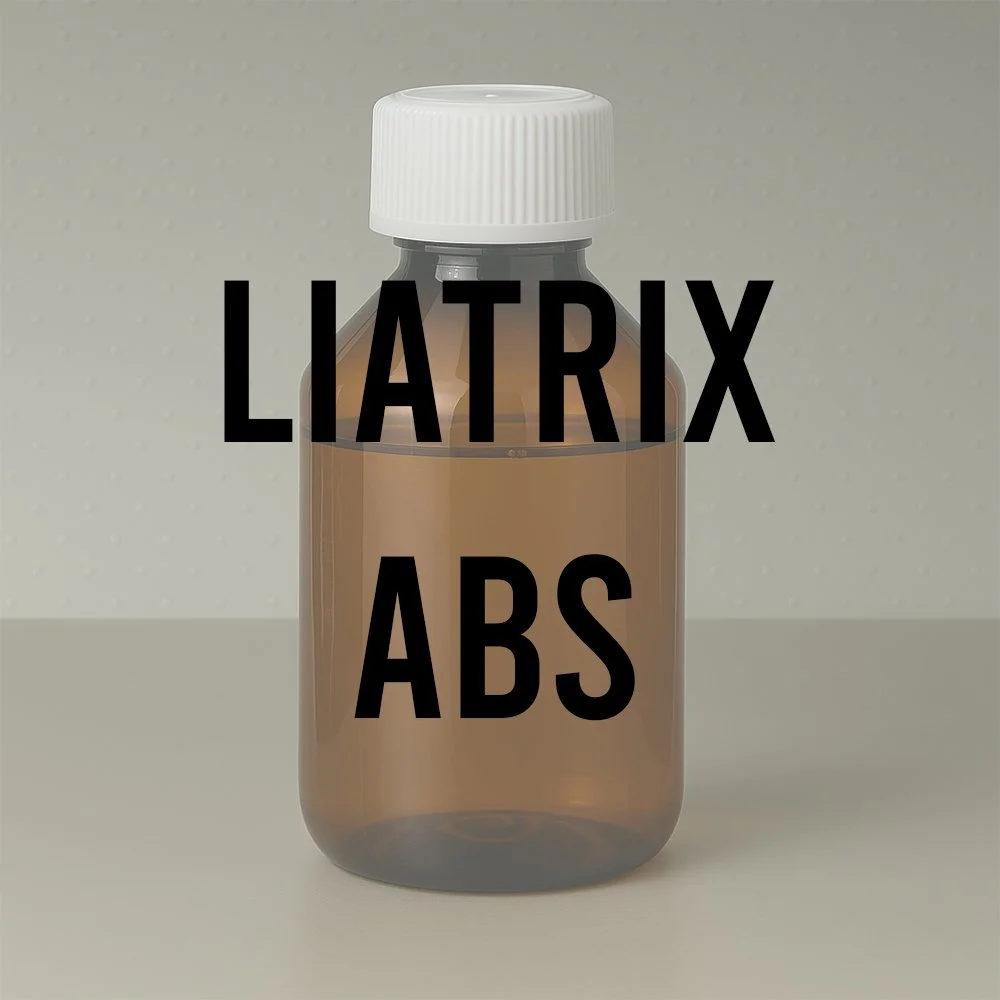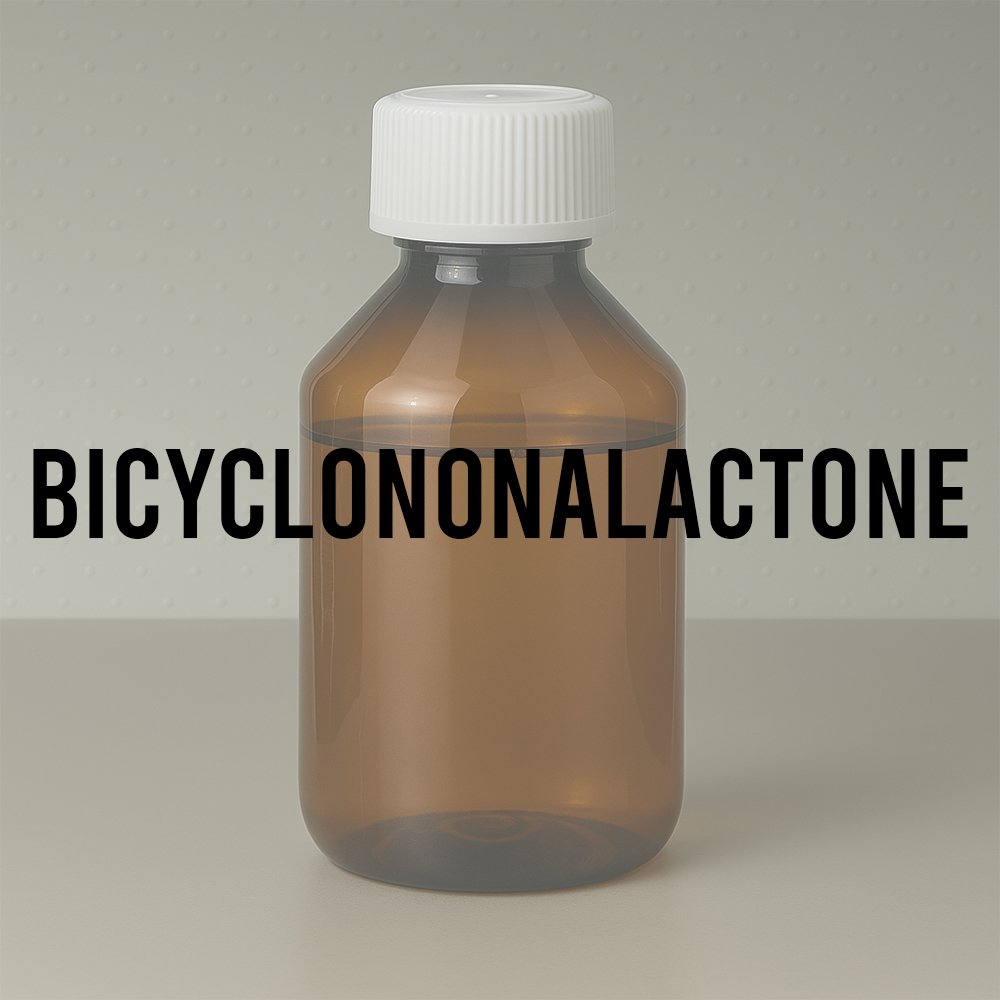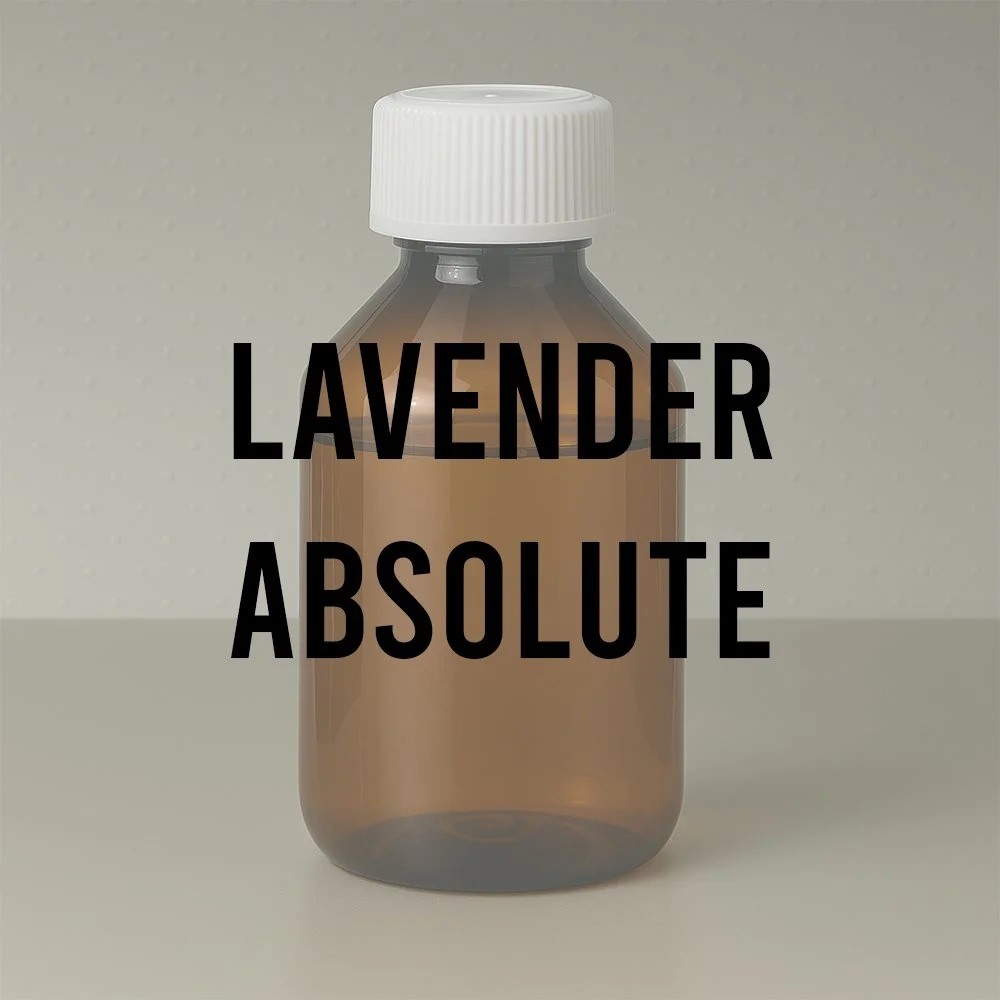LIATRIX ABSOLUTE (Deertongue Absolute) Technical Ingredient Overview
🔎 Chemical Name — Liatris odoratissima extract; Carphephorus odoratissimus extract
🧪 Synonyms — Deertongue absolute, Deertongue oleoresin, Liatris absolute, Lacinaria oleoresin, Trilisa odoratissima extract, Vanilla leaf extract, Carolina vanilla
📂 CAS Number — 68602-86-8 (extract); 68606-82-6 (oil)
📘 FEMA Number — Not currently assigned (historically used in tobacco flavoring prior to 1952 coumarin ban; no longer approved as food additive)
⚖️ Molecular Weight — Variable (natural complex mixture); primary constituent coumarin: 146.14 g/mol
📝 Odor Type — Coumarinic, herbaceous-sweet, tobacco-like
📈 Odor Strength — High to very high; extremely tenacious
👃🏼 Odor Profile — Intensely sweet, heavy-herbaceous with dominant coumarin character; vanilla-hay overlay with salty-malted undertones; reminiscent of dried tobacco leaf, tonka bean, new-mown hay, and sweet woodruff; blackcurrant and licorice nuances with powdery-bitter earth base notes; jamlike sweetness in drydown
⚗️ Uses — Luxury perfumery for fougère, chypre, tobacco, amber, new-mown hay, and Oriental bases; historical tobacco flavoring (now prohibited in food); fixative in herbal and sweet-powdery compositions
🧴 Appearance — Dark green to dark brown viscous liquid or semi-solid paste; oleoresinous consistency; waxy when cold; becomes more workable when warmed
What is Liatrix Absolute?
Liatrix absolute, commonly known as deertongue absolute, is a natural aromatic extract derived from the dried leaves of Liatris odoratissima (also botanically classified as Carphephorus odoratissimus or Trilisa odoratissima), a perennial herbaceous plant belonging to the Asteraceae family (Arctander, 1960). The plant is native to the southeastern United States, where it grows wild in coastal plains from Virginia to Florida and is colloquially known as vanilla leaf, deertongue, prairie pine, or blazing star.
The absolute is produced through solvent extraction of dried leaf material using volatile hydrocarbons such as hexane, benzene, or petroleum ether. The fresh leaves contain little aromatic material, but during the drying process, enzymatic hydrolysis converts odorless glucosides of o-hydroxycinnamic acid into free coumarin through lactonization, resulting in the characteristic sweet, hay-like fragrance (Haskins et al., 1972). The extraction yields a concrete, which upon alcohol washing produces the absolute—though commercially, this material is often referred to as an "oleoresin" despite containing negligible essential oil content (Arctander, 1960).
Liatrix absolute represents one of the most coumarin-rich natural perfumery materials, with dried leaves containing coumarin concentrations exceeding 10% of dry weight in some specimens (Haskins et al., 1972). This extraordinary coumarin content defines both its olfactive signature and its regulatory constraints in modern perfumery.
Historical Background
The use of Liatris odoratissima leaves as an aromatic material has deep roots in North American indigenous practices and early colonial commerce. Native American communities recognized the plant's fragrant properties and utilized the dried leaves in various applications, including medicinal preparations and ceremonial contexts.
European extraction of deertongue for commercial perfumery and tobacco flavoring began primarily in the 19th century, with production concentrated in England and France rather than in the plant's native United States (Arctander, 1960). Wild-harvested leaves were exported from the American Southeast to European extraction facilities, where they were processed into oleoresins and absolutes for the fragrance and tobacco industries.
Throughout the late 19th and early 20th centuries, deertongue extracts gained prominence in the food flavoring industry under various commercial names including Deertongue, Lacinaria, and Liatris Oleoresin. The material served as a natural source of coumarin for enhancing vanilla, cherry, chocolate, and tobacco flavor profiles. However, the coumarin ban implemented by the U.S. Food and Drug Administration in 1954 effectively prohibited deertongue extracts from food use, though tobacco flavoring—classified as "external use"—remained permissible (Arctander, 1960).
In perfumery, liatrix absolute has maintained continuous use since its introduction, particularly valued in classical fougère compositions, new-mown hay accords, and tobacco notes. Its high coumarin content and exceptional fixative properties secured its position in traditional perfumery, despite subsequent regulatory restrictions on coumarin concentrations in finished consumer products.
Annual production has historically remained modest, estimated at only a few metric tons per year, reflecting both limited demand and the specialized nature of wild harvesting from native populations (Arctander, 1960). Modern production continues on a small scale, primarily serving luxury perfumery rather than mass-market applications.
Olfactory Profile
Scent Family: Coumarinic-herbaceous; Tobacco subfamily
Main Descriptors: The olfactory character of liatrix absolute is dominated by an intensely sweet, heavy coumarin note reminiscent of tonka bean but with distinct herbaceous-green modifiers. The opening presents a complex sweet profile described as salty-malted vanilla with impressions of honey, dried fruits (raisins, prunes), and Mediterranean pastries (industry evaluations cited in Hermitage Oils, 2025). This initial sweetness quickly develops into deeper, darker tones characterized by powdery-bitter earth and dry hay.
Mid-development reveals the material's tobacco kinship—evoking vintage pipe tobacco shops, cured tobacco leaf, and the aromatic complexity of high-quality shag tobacco. Subtle licorice facets emerge, particularly the smooth, anise-forward character of traditional Dutch black licorice, without harsh phenolic edges. Blackcurrant undertones appear as powdery-jamlike nuances, lacking the sharp cat-urine aspects typical of cassis materials.
The drydown maintains remarkable tenacity, settling into a warm, enveloping vanilla-hay base with continued coumarin sweetness and residual herbaceous-woody notes. The overall impression balances gourmand sweetness with dry, slightly bitter botanical character—comforting yet sophisticated, nostalgic yet complex.
Intensity: Very high odor strength. The material is extremely diffusive and substantive, with perceptible odor lasting 2-3 days on smelling strips at trace concentrations (industry evaluations cited in Hermitage Oils, 2025). Recommended dilution for evaluation: 1% in solvent.
Tenacity: Exceptional persistence. Functions as a powerful fixative in compositions, anchoring volatile top notes and extending mid-range development. The coumarin-rich profile provides lasting base note character with minimal fade.
Volatility: Predominantly base note with mid-note extension. The high coumarin content (molecular weight 146.14) contributes primarily to base structure, while volatile herbaceous facets offer initial diffusion. Evaporation rate is slow, with sustained release over extended periods.
Applications in Fine Fragrance
Liatrix absolute occupies a specialized position in luxury perfumery, valued for its authentic coumarin character and exceptional fixative properties. The material finds primary application in several classical fragrance families:
Fougère Compositions: As a foundational coumarinic element, liatrix absolute reinforces the characteristic hay-lavender-oakmoss triad of traditional fougères. It provides natural depth and vintage authenticity that synthetic coumarin alone cannot achieve, contributing herbaceous complexity alongside sweet warmth.
Chypre Bases: The material integrates seamlessly into mossy-sweet chypre structures, complementing oakmoss absolute, labdanum, and bergamot. Its powdery-bitter facets enhance the characteristic contrast between citrus brightness and resinous-herbaceous depth.
Tobacco Accords: Perhaps most naturally suited to tobacco notes, liatrix absolute delivers authentic cured-leaf character with vanilla-hay sweetness. It blends harmoniously with immortelle absolute, tobacco leaf absolute, davana oil, and hay absolute to create sophisticated, multi-dimensional tobacco effects.
New-Mown Hay Notes: Alongside flouve absolute, melilotus extract, and woodruff absolute, liatrix contributes to the recreation of fresh-cut hay and dried grass meadows. Its coumarin intensity provides the signature sweetness of this genre.
Oriental and Amber Fragrances: The material's warm, sweet-powdery character supports ambery-vanilla structures, particularly in "blond amber" compositions seeking natural coumarinic depth rather than synthetic vanillic sweetness.
Typical Pairings: Liatrix absolute demonstrates excellent blending affinity with:
Synthetic musks (producing dry-powdery effects)
Heliotropin
Gamma-methyl ionone
Cinnamic alcohol
Oakmoss products
Labdanum resinoid
Lavandin absolute
Olibanum
Clove bud oil
Amyl salicylate
Patchouli oil
Vetiver
Castoreum tincture (Arctander, 1960)
These combinations leverage the material's fixative strength while modulating its intense sweetness.
Dosage: Due to extreme potency and regulatory considerations regarding coumarin content, liatrix absolute is typically employed at very low concentrations—generally 0.1-1.5% in finished compositions, with most applications clustered below 0.5%. Even at these minimal levels, the material exerts significant olfactive and fixative influence.
Performance in Formula
Liatrix absolute exhibits complex behavior in fragrance formulations, requiring careful consideration of both olfactive and technical factors:
Blending Characteristics: The material integrates smoothly into alcohol-based and oil-based perfume systems, though its high wax content can present solubility challenges in very cold conditions. Warming to approximately 30-35°C improves workability and dispersion. The absolute functions as both an active fragrance component and a compositional fixative, simultaneously contributing odor and modifying evaporation dynamics.
Synergistic Effects: When combined with other coumarinic materials (tonka absolute, hay absolute, flouve oil), liatrix produces a layered, multi-faceted sweetness with enhanced complexity beyond simple additive effects. With oakmoss and labdanum, it creates characteristic chypre-fougère bridges. Paired with violet leaf absolute or cassie absolute, unexpected fruity-green nuances emerge.
Color Impact: The dark green to brown coloration of liatrix absolute limits its application in pale or colorless compositions. This chromatic intensity necessitates consideration in product type selection, making the material less suitable for clear eau de toilettes or light-colored creams.
Stability: The absolute demonstrates good stability in finished products, with minimal degradation under normal storage conditions. The coumarin content remains relatively stable, though extended exposure to heat or light may cause minor modifications to volatile herbaceous top notes.
Dosage Sensitivity: Performance is highly dose-dependent. Below 0.1%, liatrix functions primarily as a fixative modifier with minimal olfactive character. Between 0.1-0.5%, distinct coumarin-hay notes emerge while maintaining balance. Above 1%, the material can dominate compositions, requiring careful counterbalancing with brighter or fresher elements.
Industrial & Technical Uses
Beyond fine fragrance, liatrix absolute has limited but notable industrial applications:
Tobacco Flavoring: Historically the material's primary non-perfumery use, deertongue extracts continue to flavor pipe tobacco, cigar leaf, and cigarette blends in markets where such use remains permitted. The material imparts sweet vanilla-hay notes and smooth, aromatic depth to tobacco products. This application persists despite food use restrictions, classified under "external" rather than ingestible applications (Arctander, 1960).
Historical Food Flavoring: Prior to 1954, deertongue extracts served as natural coumarin sources in cherry, chocolate, vanilla, and various confectionery flavors. Regulatory prohibition of coumarin as a food additive eliminated these applications in major markets.
Natural Product Chemistry: The plant serves as a research subject for coumarin biosynthesis studies, enzymatic glucoside hydrolysis, and natural product isolation techniques. The conversion of o-hydroxycinnamic acid glucosides to free coumarin during leaf drying provides a model system for understanding plant secondary metabolism.
Botanical Specimens: Dried leaves are occasionally available through ethnobotanical suppliers for herbarium collections, traditional medicine applications, and artisanal incense preparations, though availability remains limited due to wild-harvesting constraints.
Regulatory & Safety Overview
IFRA Status: Liatrix absolute is subject to IFRA restrictions based on its coumarin content. Under IFRA Amendment 51 (2023), coumarin itself faces concentration limits across all product categories due to dermal sensitization concerns. Natural materials containing coumarin must account for this constituent when calculating allowable use levels (IFRA, 2023). For materials with 50-75% coumarin content (typical of deertongue substitutes), maximum use concentrations are severely restricted—for example, Category 4 (fine fragrance) would be limited to approximately 0.18% absolute in the finished product, assuming 60% coumarin content and the 6.5% coumarin limit for this category. Formulators must verify actual coumarin content through analysis and calculate compliance accordingly.
Full IFRA Standards documentation: https://ifrafragrance.org/safe-use/library
EU Cosmetics Regulation: Under EU Regulation 1223/2009 and its amendments, coumarin is listed as an allergen requiring declaration on product labels when present above threshold concentrations (10 ppm in leave-on products, 100 ppm in rinse-off products). Given liatrix absolute's high coumarin content, any use in EU cosmetic products will trigger mandatory allergen labeling.
FEMA Status: Liatrix extracts are not included in the FEMA GRAS list for food flavoring. The material cannot be used as a food additive in the United States due to coumarin content restrictions. Historical food use was discontinued following the 1954 FDA coumarin ban.
Toxicology: Safety concerns center on coumarin content. Coumarin exhibits moderate hepatotoxicity in rodents but significantly lower toxicity in humans, who metabolize it primarily to 7-hydroxycoumarin rather than the toxic 3,4-epoxide formed in rats (Wikipedia, 2025). The German Federal Institute for Risk Assessment established a Tolerable Daily Intake (TDI) of 0.1 mg coumarin per kg body weight.
For topical fragrance applications, dermal sensitization represents the primary concern, addressed through IFRA's quantitative risk assessment (QRA2) methodology. Products containing liatrix absolute should never be applied neat to skin; recommended maximum use in leave-on products is 1-1.5% (industry guidelines), though IFRA restrictions based on coumarin content may require significantly lower concentrations.
Safe Handling: Standard precautions for concentrated aromatic materials apply. Avoid direct skin contact with undiluted absolute. Work in well-ventilated areas. Wear appropriate personal protective equipment when handling concentrated material. Formulation concentrations should always comply with current IFRA standards and regional regulatory requirements.
References
Arctander, S. (1960). Perfume and flavor materials of natural origin. Elizabeth, NJ: Steffen Arctander.
Haskins, F. A., Gorz, H. J., & Leffel, R. C. (1972). Form and level of coumarin in deer's tongue, Trilisa odoratissima. Economic Botany, 26(1), 44-48. https://doi.org/10.1007/BF02862260
Hermitage Oils. (2025). Deertongue absolute substitute [Product description]. Retrieved October 15, 2025, from https://hermitageoils.com/product/deertongue-absolute-substitute/
International Fragrance Association. (2023). IFRA Standards - 51st Amendment. https://ifrafragrance.org/safe-use/library
Sigma-Aldrich. (n.d.). Coumarin product specification. Retrieved October 15, 2025, from https://www.sigmaaldrich.com/
Wikipedia. (2025, August 5). Coumarin. Retrieved October 15, 2025, from https://en.wikipedia.org/wiki/Coumarin
Foto di Ember Navarro su Unsplash










